Starting to work on MG Gundam AGE-1 Normal after the introduction in the previous posting. ^^
Together with this MG kit when I got it recently is Tamiya's Panel Line Accent Color (Black), a solution for panel lining that is definitely handy to have for quite a few parts such as these ones:
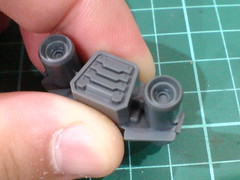
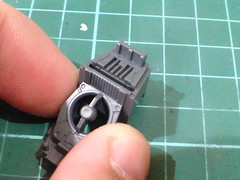
(Left) Deep narrow valleys around the four vent "slices" on the thruster part that won't be reachable by normal panel liner. ^^;
(Right) Delicate line details that would take a long time to panel line using my normal method. ^^;
For the thruster and backpack parts shown above, the black paint with thinner method can definitely be used to take care of all those hard to reach spots. That panel lining method is essentially how this new Tamiya solution works as well. As a matter of that, it smells like Tamiya enamel paint/thinner to me when I first opened the bottle cap. That prompted me to believe it's nothing more than a bottle of pre-mixed Tamiya enamel paint with thinner. ^^;
With that said, I guess it's not entirely new after all. XD However, it's mighty convenient though, because you don't have to mix the black paint and thinner each time you want to do some panel lining work. As easy as that may sound, it can be hard to get the right mix of paint and thinner for an optimum level of blackness in the lines to be applied. Too much paint, and the solution will be too thick and won't flow well through the "canals and valleys" to form the panel lines you want; too much thinner on the other hand may completely dissolve the paint and the lines that come out of that are completely useless. ^^; In the end, a lot of paint and thinner would be wasted for maybe just a couple of lines. Economically, mixing the paint and thinner in DIY fashion isn't that favorable for me who would call upon luck some times to get the right mixture. ^^;
And the smell of enamel paint and thinner. Whoopie doopie XD Luckily the smell isn't too bad with this Tamiya solution.
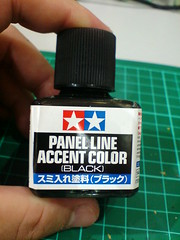
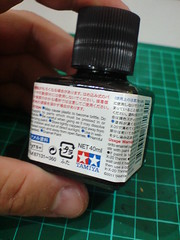
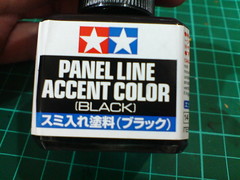

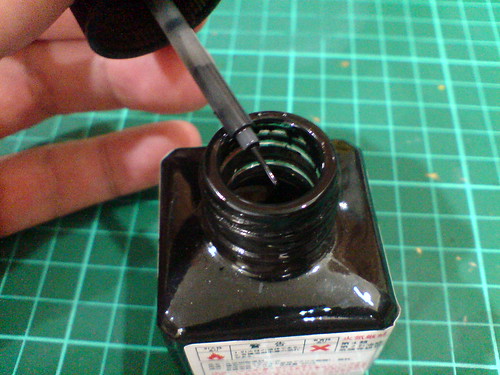
The fine tip paint brush attached inside the bottle cap is used to apply the solution onto intended parts.
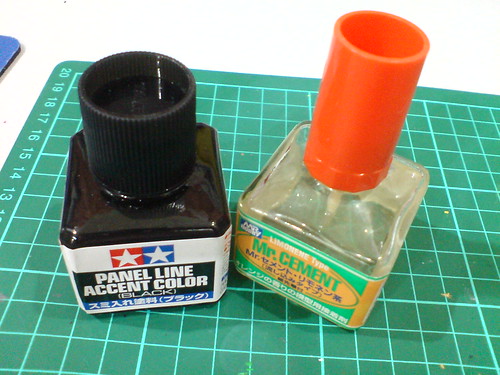
About the same bottle size as my cement for model kits, so it's very easy to store/retrieve for repeated use. ^^
Lets see how's the result of Tamiya's Panel Line Accent Color (Black) on this kit: ^^
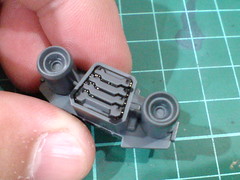
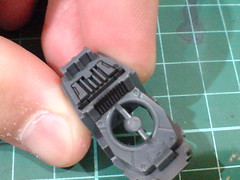
[Backpack]
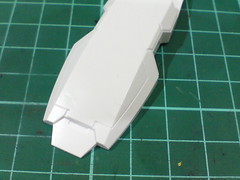
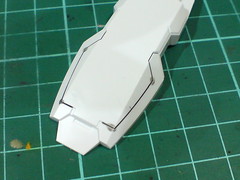
[Shield]
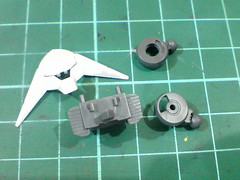
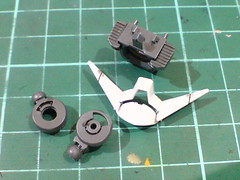
[Head]
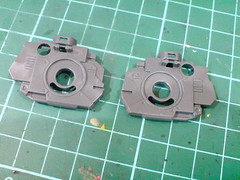
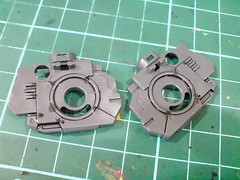
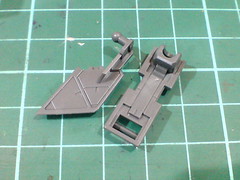
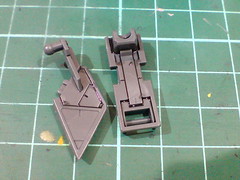
[Hip and side skirt]
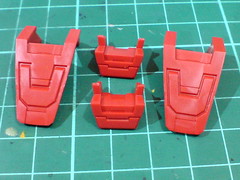
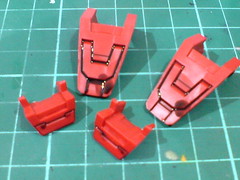
[Feet]
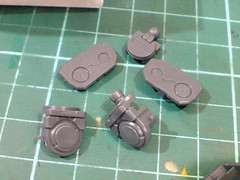
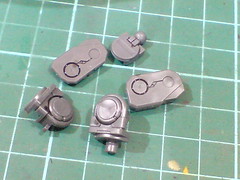
[Joints for the arm]
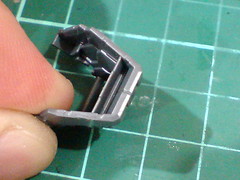
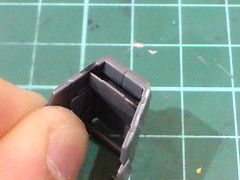

[Inner frame of the shoulder armor]
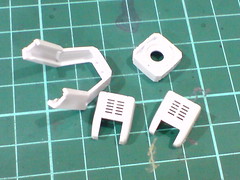
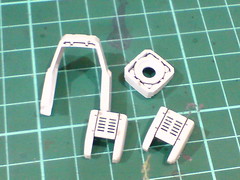
[Armors of the arm]
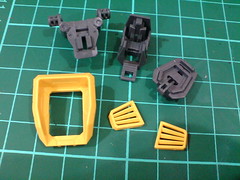
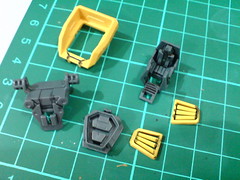
[Body]
Disregarding the result first, I have to say that the work is really very enjoyable. ^^ It's exactly like the black paint with thinner method, but having to omit the paint mixing process and seeing how well the Tamiya solution worked on the parts, it really feels like a great tool to have. ^^
I imagine the work to be pretty addictive too. ^^ Just a touch of the brush on various parts, and most of the details would be outlined - the targeted ones, plus those unintended ones as well. ^^ Getting the latter panel lined is especially awesome, as my personal idea about model kits is: the more line details to show, the better - except for kits that won't look good with explicit lines (in my opinion) like MG Unicorn Gundam. ^^ Then, some of those lines are tremendously hard to reach, and I usually omit the panel line work on them, hence "unintended one". With this Tamiya solution, all the details would come out nicely when the paint flows through the different areas. ^^
Still, it's just a panel lining solution. Cleaning up excessive paint is a different task. Since it smells like enamel paints, I'll use enamel thinner for that task then. ^^
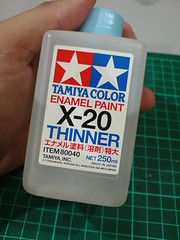
Tamiya Color Enamel Paint X-20 Thinner
It's also time for a lot of cotton swaps to be killed in combat. ^^;
The result from the work:
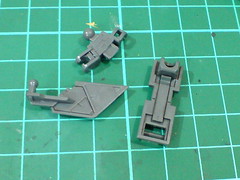
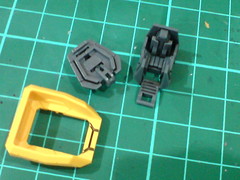
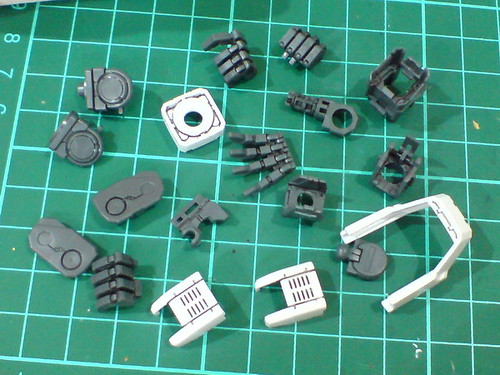

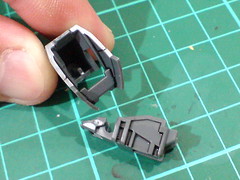
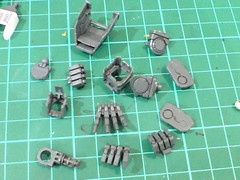
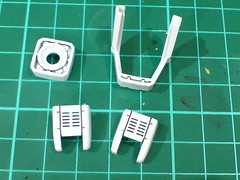

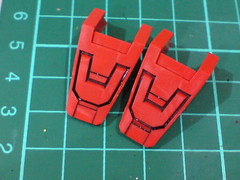
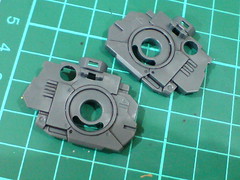
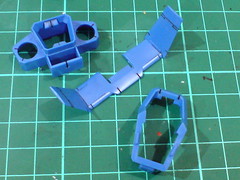
From my precious experience with the black paint with thinner method, it's very important to manage where to "land" the brush on the parts for the paint to start flowing. Anywhere close to the intended or unintended lines is fine, but the selected location will determine how much work you'll need to do to clean off excessive paint. For me, I always target areas that are wide enough for cotton swap to reach, or corners that aren't too narrow. It would be mighty discouraging if it only takes one second for the panel lining to be done but ten minutes for excessive paint to be cleaned off. ^^;
Given how easy and convenient this panel lining solution is, I'm pretty sure I'll call upon it again for some other parts not shown in this posting. Still, it doesn't replace my usual method of drawing the lines one by one onto some of the parts. Those lines are usually the most obviously ones on armor parts that can be reached using a normal panel liner, so I still prefer the usual way that would make the lines stand out a lot. It's also part of my personal enjoyment in Gunpla-ing really, which doesn't have anything to do with this Tamiya solution or the black paint with thinner method. ^^ Nothing beats that nostalgic goodness, but this panel lining solution is quite a handy helper for people who needs to juggle between work, studies and enjoying this hobby. ^^




2 comments:
Cool i wasn't aware of that solution they had for sale. time for me to get some at my local hobby store :) thanks for finding this and keep up your work. I always look forward to your posts
How long does the panel line dry?
Post a Comment